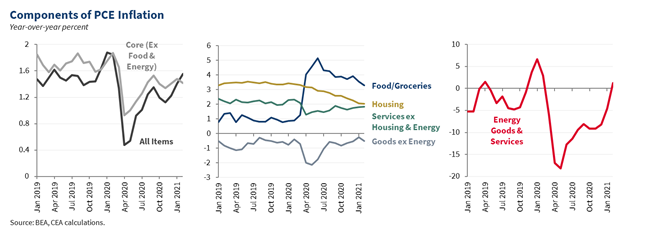
Inflation increased at a 4.2% rate year-over-year last month and 0.8% month-over-month. Core inflation—without food/energy—rose 3.0% year-over-year and 0.9% month-over-month 1/
Part of this was due to base effects, reflecting the depressed prices from last spring. Controlling for base effects by smoothing across the 14 months since February 2020, the rate of core CPI inflation was 2.2%. 2/ 

Some of April’s price increase also reflects pandemic-induced supply chain pressures that are expected to be transitory. The sharp increase in used motor vehicle prices accounted for more than a third of the increase in the month-over-month index. 3/
Separately, part of the increase was due to a “normalization” in prices in some sectors that had been hard hit by the pandemic, as their prices continue to climb out of their pandemic low level. 4/
For instance, airline fares rose by 10.2% month-over-month, but prices in that sector remain well below their pre-pandemic level. 5/ 

A price index of pandemic-affected services shows a sharp increase in April, but that the level of prices is still below the pre-pandemic level 6/ 

As the economy recovers, there will be months that come in below or above expectations as strong demand meets recovering supply. Recovery from the pandemic will not be linear. The Council of Economic Advisers will continue to monitor the data as they come in. /end
• • •
Missing some Tweet in this thread? You can try to
force a refresh






